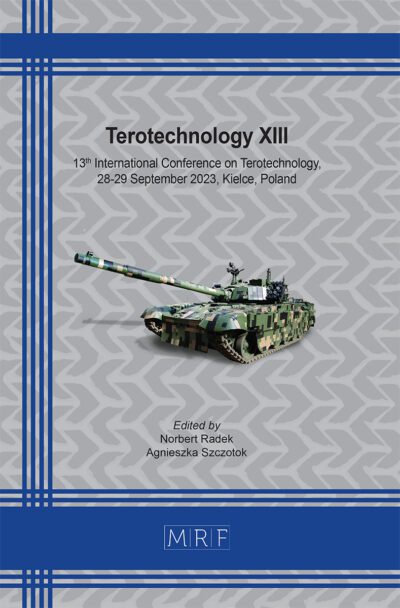Data-driven approaches for predicting underfill in hot bulk forging processes
Yuyao Jiang, Artem Alimov, Marcus Knaack, Sebastian Härtel, Markus Gardill
Abstract. Underfill is a crucial defect that should be avoided in forgings. Parameters contributing to underfill include, but are not limited to, die shape, workpiece temperature, and other process parameters. The finite element method (FEM) allows to analyze such multivariate tasks as a priority over actual experiments. On the other hand, the computational complexity of FEM results in long simulation times, and it is challenging to assess the impact of individual parameters on specific defects. This work aims to train FEM data-based models to predict underfill in hot bulk forging. An artificial neural network and a traditional machine learning model are trained for comparative analysis regarding accuracy and explainability. The influence of features on the underfill is interpreted through explainable methods. The results show that data-driven methods for predicting and reducing underfill are promising and further introduce the future work of integrating real-world data.
Keywords
Data-Driven Model, Hot Bulk Forging, Underfill, FEM-Simulation, Sensor Data
Published online 5/7/2025, 10 pages
Copyright © 2025 by the author(s)
Published under license by Materials Research Forum LLC., Millersville PA, USA
Citation: Yuyao Jiang, Artem Alimov, Marcus Knaack, Sebastian Härtel, Markus Gardill, Data-driven approaches for predicting underfill in hot bulk forging processes, Materials Research Proceedings, Vol. 54, pp 1962-1971, 2025
DOI: https://doi.org/10.21741/9781644903599-211
The article was published as article 211 of the book Material Forming
![]() Content from this work may be used under the terms of the Creative Commons Attribution 3.0 license. Any further distribution of this work must maintain attribution to the author(s) and the title of the work, journal citation and DOI.
Content from this work may be used under the terms of the Creative Commons Attribution 3.0 license. Any further distribution of this work must maintain attribution to the author(s) and the title of the work, journal citation and DOI.
References
[1] S. Kitayama, Technical review on design optimization in forging, The International Journal of Advanced Manufacturing Technology 132 (2024) 4161–4189. https://doi.org/10.1007/s00170-024-13593-w
[2] C. Cernuda, I. Llavori, A.-C. Zavoianu, A. Aguirre, A. Zabala and J. Plaza, Critical Analysis of the Suitability of Surrogate Models for Finite Element Method Application in Catalog-Based Suspension Bushing Design, ETFA 2020 1 (2020) 829-836. https://doi.org/10.1109/ETFA46521.2020.9212166
[3] N. V. Jagtap, N. Reinisch and D. Bailly, Fast prediction of the material displacement in open die forging using neural networks, ESAFORM 41 (2024) 2299-2308. https://doi.org/10.21741/9781644903131-253
[4] J. Stanke, A. Feuerhack, D. Trauth, M. Patrick and F. Klocke, A predictive model for die roll height in fine blanking using machine learning methods, Procedia Manufacturing 15 (2018) 396-409, Toyohashi, Japan, 2018. https://doi.org/10.1016/j.engfailanal.2015.11.008
[5] X. Zhuang, W. Zhang, Y. Wu and Z. Zhao, Comprehensive prediction method for die-roll height of fine-blanking components, Int J Adv Manuf Technol 98 (2018) 2819–2829. https://doi.org/10.1007/s00170-018-2430-y
[6] F. Finkeldey, A. Saadallah, P. Wiederkehr and K. Morik, Real-time prediction of process forces in milling operations using synchronized data fusion of simulation and sensor data, Engineering Applications of Artificial Intelligence 94 (2020) 103753. vol. 94, 2020. https://doi.org/10.1016/j.engappai.2020.103753
[7] A. Alimov, Y. Jiang, M. Gardill and S. Härtel, Integrating stochastic effects and uncertainties into inverse analysis of hot bulk forging processes through automated API-driven finite element simulations and machine learning, ESAFORM (2025) submitted.
[8] L. Breiman, Random Forests, Machine Learning 45 (2001) 5-32. https://doi.org/10.1023/A:1010933404324
[9] A. Holzinger, Data Mining with Decision Trees: Theory and Applications, Online Information Review 39 (2015) 437-438. https://doi.org/10.1023/A:1010933404324
[10] L. Rokach, Ensemble-based classifiers, Artif Intell Rev 33 (2010) 1-39. https://doi.org/10.1007/s10462-009-9124-7
[11] S. Haykin, Neural Networks and Learning Machines, third ed., Prentice Hall, New York, 2009.
[12] S. M. Lundberg and S.-I. Lee, A Unified Approach to Interpreting Model Predictions, 31st NIPS 1 (2017) 4768–4777. https://doi.org/10.48550/arXiv.1705.07874
[13] S. Gawde, S. Patil, S. Kumar, P. Kamat, K. Kotecha and S. Alfarhood, Explainable Predictive Maintenance of Rotating Machines Using LIME, SHAP, PDP, ICE, IEEE Access 12 (2024) 29345-29361. https://doi.org/10.1109/ACCESS.2024.3367110
[14] B. Denkena, M.-A. Dittrich and F. Uhlich, Augmenting milling process data for shape error prediction, Procedia CIRP 57 (2016) 487-491. https://doi.org/10.1016/j.procir.2016.11.084












